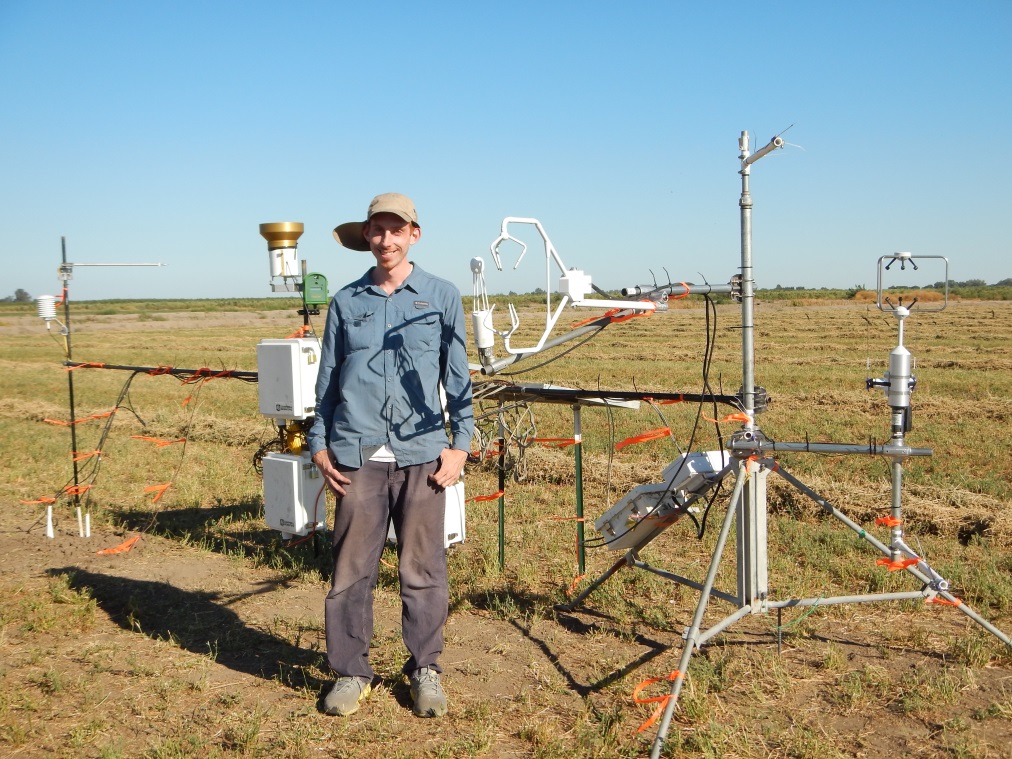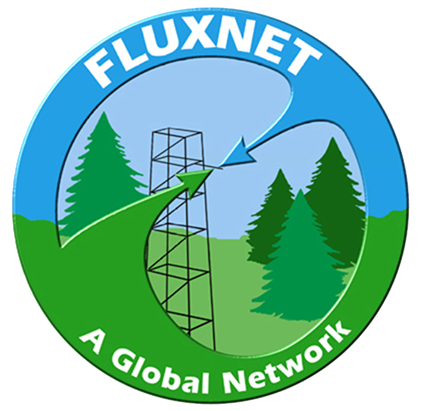This is the next in a line of periodic interviews with Fluxnet Young Scientists. This month, we’re glad to introduce Eric Kent, who is a PhD student in Kyaw Tha Paw U‘s lab in the University of California, Davis, USA. Eric recently received an honorable mention in the Atmospheric Biogeosciences section for his presentation at the AMS conference (link).

Please tell us about yourself
I am currently a Ph.D. candidate in Atmospheric Science at the University of California, Davis working in Kyaw Tha Paw U’s Biomicrometeorology Lab. I am interested in both measurement and modeling of canopy microclimate and fluxes. Projects I am working on include: 1) quantification of consumptive water use of several crops in the Sacramento-San Joaquin River Delta and pistachio orchards in the Southern San Joaquin Valley using eddy covariance and surface renewal measurements, and 2) measurement and modeling of microclimate and phenology in deciduous orchards with a focus on the temperature of buds and emergence from dormancy in spring. I am a trainee in the Climate Change, Water, and Society Integrative Graduate Education and Research Traineeship (CCWAS IGERT) program.
During my M.S. work with Kyaw Tha and William Horwath, I measured greenhouse gas emissions from windrows of composting yard-waste using a micrometeorological mass balance method. At Arizona State University I studied Meteorology/Climatology and Geographic Information Systems and did an undergraduate honors thesis analyzing long-term changes in observed wind speed and the possible relationship with the urban heat island effect in Phoenix, AZ.
What’s your recent study? What’s the main take-home message?
An ongoing project that I recently presented at the AMS conference is a comparison of modeled canopy microclimate from the UCD-ACASA higher-order turbulence closure land-surface model with measurements from the Canopy Horizontal Array Turbulence Study (CHATS). The model produces vertical profiles of microclimate and turbulence variables (e.g. air temperature, wind speed, momentum flux, turbulence kinetic energy) at 10-40 levels within and above the modeled canopy. There are few datasets to use for comparison that have such an extensive within canopy coverage as CHATS, which included CSAT3 sonic anemometers running at 13 heights in and above a walnut orchard, both before and after leaf growth in the spring. Preliminary comparisons and tests I have performed so far indicate reasonable measurement-model agreement and we see that the degree of measurement-model agreement can differ substantially depending on the vegetation conditions (before leaf-out vs. after leaf-out) and the vegetation parameters in the model (e.g. drag coefficients, plant area density).
As you work more with flux data, what skills do you feel you need to acquire to make your studies more effective?
Learning how to do data processing, analysis, and visualization in R has been absolutely invaluable to my studies in the past and I am quickly learning how to scale up these steps to larger datasets. I am now working with data from more than 22 surface renewal and eddy covariance stations we have set up in the past year or two. Managing and analyzing all this data is a major undertaking and I am constantly refining how to do it most efficiently.
The logistics behind taking these measurements in the first place is another skill set I am continuing to refine. This includes everything from data-logger programming, to working with growers to identify suitable locations for the instrumentation, to troubleshooting unexpected issues that inevitably arise in the field. I am thankful for everything I have learned from very experienced collaborators and mentors on this side of things.
Who have been your mentors and how have they helped you arrive at where you are today?
I would not be doing what I am doing today without guidance and mentorship from many people. From technical discussions on theory and modeling, to practical advice on programming and field instrumentation, I am constantly learning from Kyaw Tha’s extensive experience. I am grateful for all his guidance and encouragement. Rick Snyder is another mentor who I am very thankful to have the opportunity to work with. I have learned a lot from Rick’s experience as an extension specialist and his many years carrying out evapotranspiration measurements. I benefited greatly from working with Tom Shapland who introduced me to using R and guided me on setting up flux instrumentation during my first years in graduate school. These skills are still invaluable to my work today.
During my undergraduate program at ASU I was also lucky to have many great mentors. I gained experience working as a preceptor for Ronald Dorn that has been very helpful in the teaching I have done in my graduate career. Soe Myint and Tony Brazel provided much guidance and encouragement during my undergraduate thesis work on the urban heat island effect. I am particularly thankful for the mentorship of Randall Cerveny, who gave me a first taste of Reynolds averaging, provided much valuable guidance and support for my thesis work, and encouraged me to pursue graduate school. I also learned much from Robert Balling, Nancy Selover, Elizabeth Larson, Barbara Trapido-Lurie, Rob Edsall, and many others during my time at ASU.
What resources do you think the flux networks or communities have provided or could potentially provide to help your studies or career?
The Fluxnet-YSN is a great resource. It provides a way to connect with other graduate students and researchers and share ideas and experiences. It is a great way to start to get to know other researchers in the field that one could work with in the future. The job postings sent out on the listserv are helpful for seeing the projects other groups are working on and to see the variety of positions that are currently available.
What are your career goals and aspirations?
I hope to continue doing biometeorological research in some capacity whether in an academic setting, as part of a government agency, or in the private sector. I am also interested in helping apply this research. A career in the Cooperative Extension system seems like it could meet both these interests. There are many pressing problems where biometeorology plays a key part. I want to continue to use the skills I am developing to help address them.
— Texts & photos are provided by Eric Kent —
